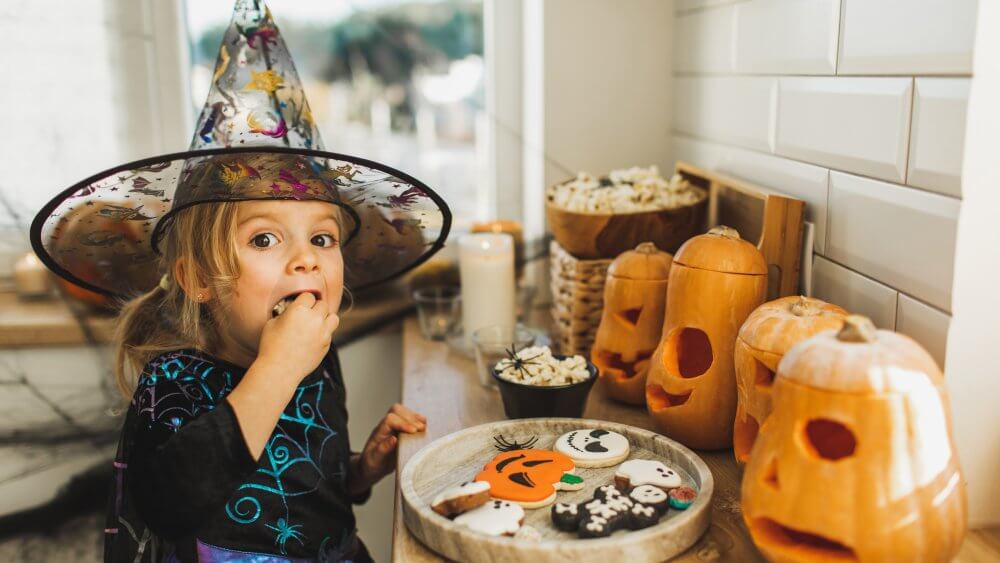The Sweet Chemistry Behind Halloween Candy
For many of us, Halloween is all about the treats. Every candy in your trick-or-treat bag is a little bite of science.
The main ingredient in most candy is sugar, or sucrose, a molecule made of carbon, hydrogen, and oxygen. When sugar is heated, it melts and breaks down into new compounds that give caramel its golden color and rich, toasty flavor.
Chocolate also has chemistry to thank for its smooth texture and snap. Through a process called tempering, chocolatiers carefully control how cocoa butter crystals form, giving chocolate its glossy finish and satisfying bite.
Even the bright colors of gummies, lollipops, and candy corn rely on food colorings that are carefully tested and approved by the U.S. Food and Drug Administration (FDA) to ensure they’re safe to enjoy.
Costumes: Chemistry You Can Wear
Whether you’re dressing up as a superhero, a witch, or a ghost, the chemistry of materials helps bring your Halloween look to life.
Many costumes are made from synthetic fibers such as polyester and nylon, polymers created from repeating molecular chains. These materials are lightweight, easy to dye, and help make costumes durable.
The same chemistry that gives us vibrant colors also creates special effects like glow-in-the-dark paint and fabric. These materials use phosphorescent pigments, which absorb energy from light and slowly release it, creating that spooky green glow long after the lights go out.
Decorations That Glow, Flicker, and Fog
Chemistry also brings the magic to Halloween decorations. Dry ice, a Halloween favorite, is frozen carbon dioxide (CO₂). When it warms, it turns directly from a solid to a gas, creating that eerie mist that spills from cauldrons and punch bowls.
And those glowing lights in jack-o’-lanterns and yard displays? Many use LEDs (light-emitting diodes), which rely on semiconductors to produce light efficiently. LEDs are safer and longer lasting than traditional bulbs, and they come in a variety of orange, purple, and green hues.
Safety by Design
While chemistry makes Halloween fun, it also helps make it safer.
Costumes and decorations often use flame-retardant treatments designed to reduce fire risks. Modern batteries and LED lights are made with advanced materials that improve performance and reliability, helping reduce the need for open flames in decorations.
This Halloween, when you unwrap a candy bar, turn on a glowing pumpkin, or slip into your favorite costume, remember: chemistry is behind every trick and treat.




